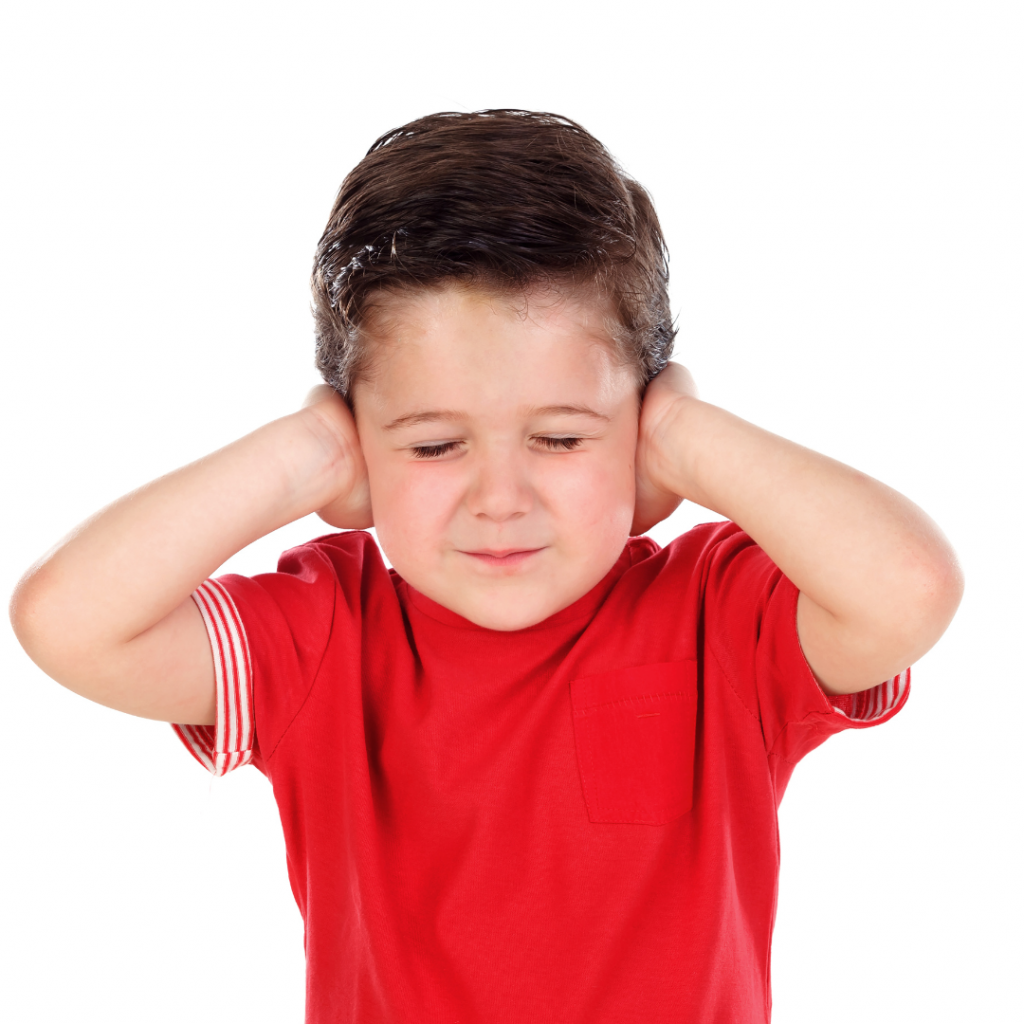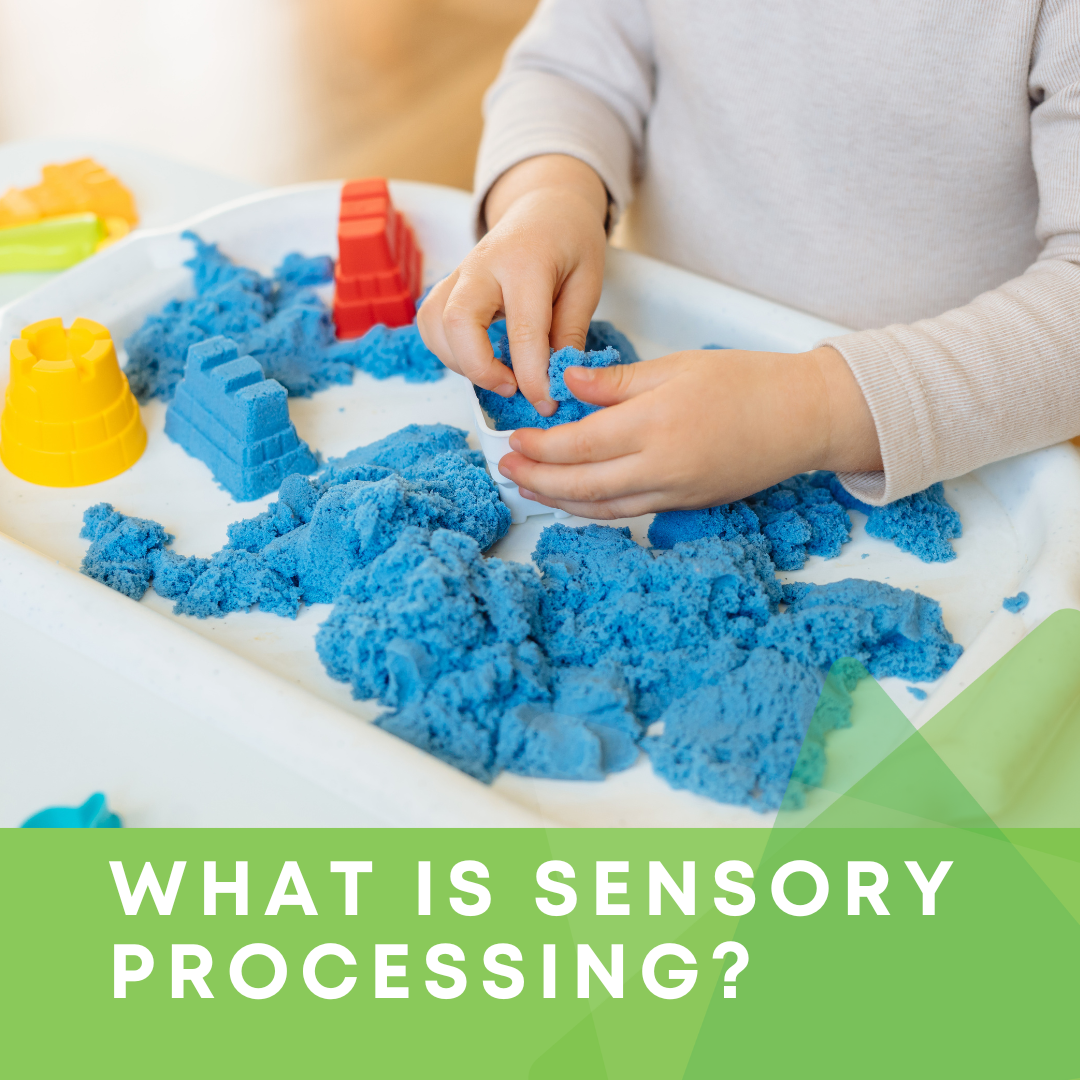Sensory processing is the ability to perceive, process and organise information that is received through our senses. Once we receive this information our brain reacts to these sensations and this is displayed in our behaviours and motor responses. As infants and children grow, so do their sensory development as they interpret and comprehend from their body and environment to respond in a consistent and meaningful manner. For efficient sensory processing, the seven senses below must work together for this to be achieved, which include;
Visual sense:
Is the ability to understand and interpret what is seen. The visual system uses the eyes to receive information about contrast of light and dark, colour and movement. It detects visual input from the environment through light waves stimulating the retina.
Auditory Sense:
Is the ability to interpret information that is heard. The auditory system uses the outer and middle ear to receive noise and sound information. They receive information about volume, pitch and rhythm. It is important for the refinement of sounds into meaningful syllables and words.
Gustatory Sense:
Is the ability to interpret information regarding taste in the mouth. It uses the tongue to receive taste sensations, and detects the chemical makeup through the tongue to determine if the sensation is safe or harmful.
Olfactory Sense:
Is the ability to interpret smells. It uses the nose to receive information about the chemical makeup of particles in the air to determine if the smell is safe or harmful.
Tactile sense:
Is the ability to interpret information coming into the body by the skin. It uses receptors in the skin to receive touch sensations like pressure, vibration, movement, temperature and pain. It is the first sense to develop (in the womb), and as such is very important for overall neural organisation.
Proprioceptive Sense:
Is the ability to interpret where your body parts are in relation to each other. It uses information from nerves and sheaths on the muscles and bones to inform about the position and movement of body through muscles contracting, stretching, bending, straightening, pulling and compressing.
Vestibular sense:
Is the ability to interpret information relating to movement and balance. The vestibular system uses the semi-circular canals in the inner ear to receive information about movement, change of direction, change of head position and gravitational pull. It receives information about how fast or slow we are moving, balance, movement from the neck, eyes and body, body position, and orientation in space.

Why is sensory processing important?
Sensory processing plays a crucial role in self regulating emotions. With sensory processing skills, children are able to better regulate their emotions and calm themselves down with things like deep breathing exercises, tight hugs, blowing pinwheels or bubbles, walking barefoot on the grass, smelling herbs and essential oils. Sensory processing also affects a child’s actions in their environment, from how they walk to how they interact with their peers and teachers. Sensory processing also promotes fine motor skills, builds language skills, develops cognitive skills, improves social skills.
What are some indicators of sensory processing?
Auditory:
– Frequently asks others to be quiet or stop talking
– Holds hands over ears
– Easily afraid when loud sounds are heard
– Startles to the sounds of hand dryers and flushing toilets
– Doesn’t like being in loud spaces
– Easily distracted by background noise
– Has difficulty paying attention
Gustatory:
– Struggles to listen and look at the same time
– Reading can be challenging
– Becomes upset with the sudden sounds and noises
– Slow to follow instructions
– Struggles to participate in group discussion
– Dislikes sirens, fire alarms or fireworks
– Sensitive to hot and cold foods
– Gags on food textures often
– Doesn’t like the taste of toothpaste
– Prefers bland plain foods without spices and flavour
– Anxious to go to the dentist
– Picky about different brands of foods
– Avoids foods with certain textures
– Picky or selective eater
– Dislikes brushing teeth
– Doesn’t want to try new foods
– Sometimes chokes on food or afraid they will choke
– Has a utensil preference (certain fork or spoon)
– Prefers to eat at home
– Dislikes different textures of food mixed together
– Has difficulty chewing
– Prefers pureed food
Olfactory:
– Dislikes smells that others don’t notice
– Tells others how bad they smell
– Won’t eat several foods because of their smell
– Does not like the smell of other people’s homes
– Complains over perfume smells
– Pinches nostrils to avoid smelling the environment
– Nauseated by certain scents
– Very sensitive to the smell of what someone is cooking
– Avoids places due to their smell
– Rejects others because of their smell
Proprioception:
– Dislikes hugs and affection
– Often appears to be lazy or too tired
– Sits still without much movement
– Uncoordinated body movements
– Does not like to be touched by others
– Struggles walking up and down stairs
– Writes very lightly on paper
– Often has low energy
– Tires out easily from standing too long
– Hypersensitive to pain
– Eats pureed foods
– Avoids wearing tight clothes
– Has poor posture
– Refuses to participate in physical activities and sports
– Difficulty with body awareness
– Often fidgets
– Always in constant motion
– Falls often and clumsy
– Has a heavy foot and stomps fast
– Jumps on bed and furniture
– Appears to be aggressive
– Frequently grinds teeth
– Pushes or hits other children
– Known to play rough
– Struggles with fine motor skills
– Prefers being wrapped up in heavy blankets
– Bumps and crashes into things
– Walks on toes
– Purposely flops down on the floor
– Poor handwriting skills
– Enjoys tight hugs and being squishes under cushions
Tactile:
– Difficulty getting hair cuts
– Avoids being touched or sitting too close to others
– Resists wearing shoes, jeans, underwear, or socks
– Doesn’t like nails being cut
– Dislikes taking a shower or a bath
– Gets angry or surprised by unexpected touch
– Dislikes being kissed or hugged
– Avoids messy play
– Refuses to eat different food textures
– Avoids going barefoot in the grass
– Doesn’t like to wash or brush hair
– Extremely ticklish
– Bothered by clothing seams and fabrics
– Gets upset when hands are dirty

Vestibular:
– Can spin for a long time and not get dizzy
– Has difficulty sitting still
– Enjoys riding on scary fairy rides
– Likes to hang upside down
– Craves fast and intense movement
– Enjoys rocking in a chair
– Struggles to pay attention
– Frequently falls and often clumsy
-Often jumps on beds and furniture
– Always fidgeting
– Would rather run skip and jump than walk
– Takes risks while playing
– Always in motion
– Prefers heights and being high in the air
– Avoids slides and swings at the park
– Fearful of heights
– Dislikes escalators and elevators
– Afraid of rising a bike
– Difficult when using stairs
– Motion sickness
– Do not like to watch spinning objects
– Being clumsy
– Easily dizzy when in motion or spinning
– Anxious to fall
– Scared to walk on unlevel areas
– Difficulty balancing or jumping
– Easily startled if moves by someone else
– Fearful of being upside down
Visual:
– Covers eyes to bright lights
– Gets headaches from lights
– Squints eyes
– Has poor eye contact
– Likes to play in the dark
– Sensitive to bright colours and lights
– Difficulty adjusting to sudden colour changes
– Doesn’t like fluorescent lights
– Flashing lights hurt their eyes
– Distracted by decorations in a room
– Complains about colourful lighting
– Doesn’t like to be in a brightly lit room
– Prefers dimmer colours to brighter colours
– Uncomfortable around too much clutter
If you are attending any of the Y Whittlesea Early Learning Centres and have concerns about your child’s development, including sensory seeking or aversion, please contact the EYES team at 📧 eyes@yinclusion.org.au to discuss how we can support you and your child.
If you would like to learn more about sensory processing, we recommend the following articles:
https://childdevelopment.com.au/areas-of-concern/diagnoses/sensory-processing-disorder-spd/
https://mybrightwheel.com/blog/sensory-development
Interested in similar content? Check out our related articles:


